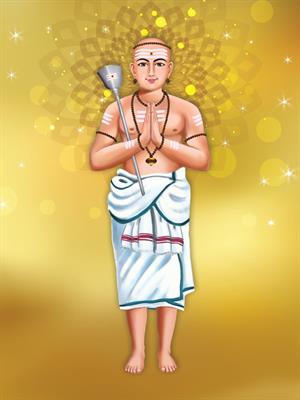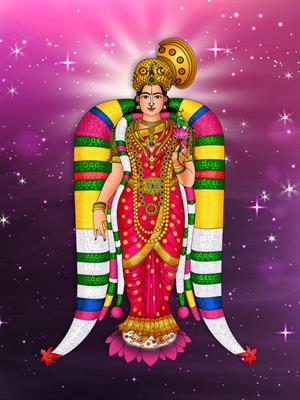
PUMPA - SMART LEARNING
எங்கள் ஆசிரியர்களுடன் 1-ஆன்-1 ஆலோசனை நேரத்தைப் பெறுங்கள். டாப்பர் ஆவதற்கு நாங்கள் பயிற்சி அளிப்போம்
Book Free DemoThe Bhakti Movement in Tamil Nadu:
The tradition of Bhakti, or the complete surrender to God, was taken forward by the poets and saints of Tamil Nadu. They opposed the concept of caste-based supremacy and fought the dogmatic ideas.
The influx and preaching of various Jain and Buddhist monks in Tamil Nadu and their stringent methods to attain salvation were opposed by the proponents of the Bhakti Movement.
Kalabhras: The Kalabhras ruled Tamil Nadu from the \(3^r\)\(^d\) \(-\) \(7^t\)\(^h\) century, and they were great patrons of Jainism and Buddhism.
To counter the rise of Buddhism and Jainism in Tamil Nadu, the Bhakti saints of Tamil Nadu visited villages and sang poems in the native (Tamil) language to arouse the feeling of oneness which earned more patronage for the saints among the masses.
Bhakti Movement in Tamil Nadu reached its zenith under the Saints of two sects who took the ideals to the nook and corner of the Tamil society.

The Shaivites:
The Shaivites are the followers of “Lord Shiva” who sang Tamil poems to spread the ideals of the Shaivist cult among the population. Saints of different strata existing in the society from different backgrounds came together to proliferate the ideals.

Appar
Among the Shaivites, an important group of people called “Nayanmars” contributed more to society and Tamil literature during the Bhakti movement.
Nayanmars: These are a group of \(63\) saints considered as the greatest proponents of the Shaiva cult. Among them, Appar, Sundarar and Thirugnanasambandar also known as the “Trio” were considered the greatest of the Nayanmars.
Many kings began to patronise the Shaiva cult, which made Buddhism and Jainism lose their patronage in later days.
Appar: Considered as one of the greatest Shaiva saints, he was instrumental in converting “Mahendravarman”, the Pallava king to Shaivism.
Nambi Andar Nambi who belonged to the \(10^t\)\(^h\) century compiled the literature of Shaiva Saints known as the “Thirumurai’s” which is a compendium of \(12\) books. Out of which Nambi compiled \(11\).
Periyapuranam, which was written by Sekkilar was considered the \(12^t\)\(^h\) book of Thirumurai. The book is also known as the “Fifth Veda”.
The Alwars of Bhakti Tradition:
The Alwars are followers of Vaishnavism, which was a religious cult established to worship “Lord Krishna” and his incarnations. They sang songs in praise of Lord Krishna to proliferate their ideas. They were also considered as the “Pioneer of Bhakti Movement in Tamil Nadu”.

Andal
They also built the Srirangam temple, which was the seat of Lord Vishnu in Tamil Nadu, to attract the followers of Vaishnavism.
Divya Prabandhams: This is a compilation of Vaishnava literature that contains \(4000\) songs. Nathamuni, a scholar-saint belonging to the \(10^t\)\(^h\) century compiled the songs of Divya Prabandhams.
Among the Alwar saints, \(12\) of them are believed to be the greatest, who contributed substantially to the development of the Bhakti movement and literature.
Andal: She was the only woman Saint of Vaishnavism who was an orphan and was adopted by Periyalwar, also known as Vishnu Chettiar, from Srivilliputhur temple. She also went on to compose books like “Thiruppavai” and "Nachiyar Thirumozhi" in favour of Lord Krishna.
Nammalvar was a notable saint of the Vaishnava cult who wrote the \(1102\) para of songs called “Thiruvaimozhi” which was later compiled by a poet named “Madhurakavi”.